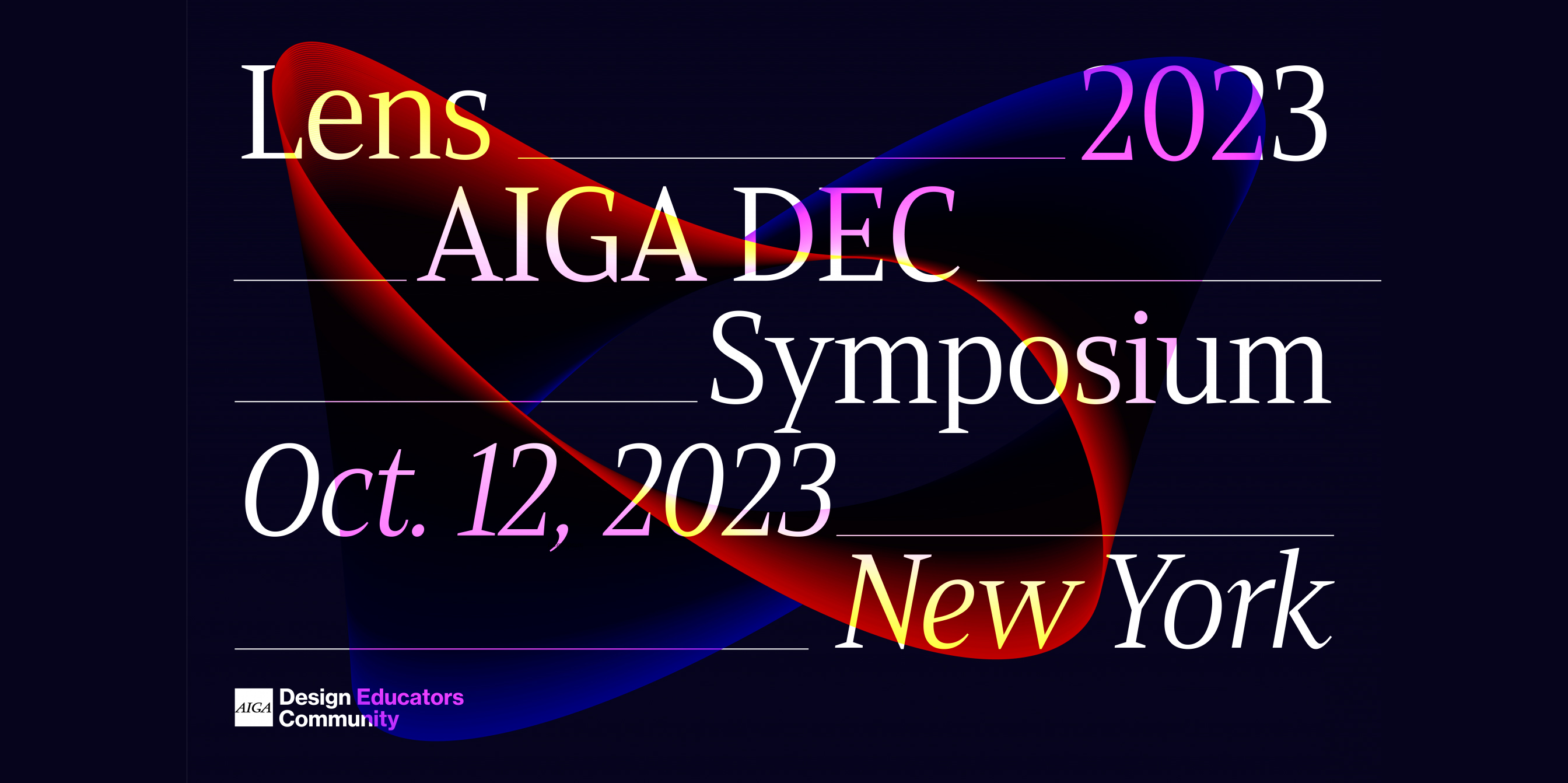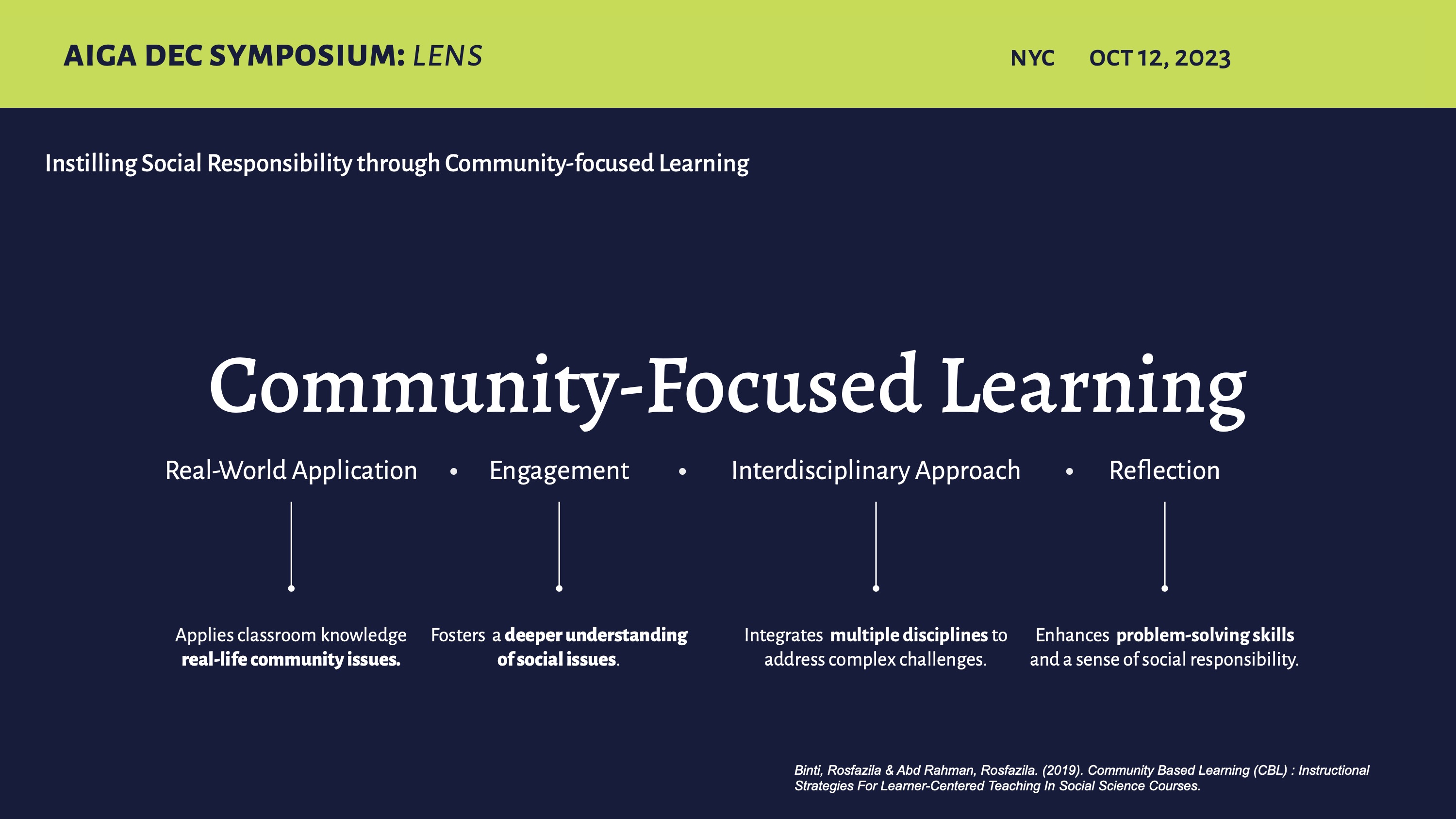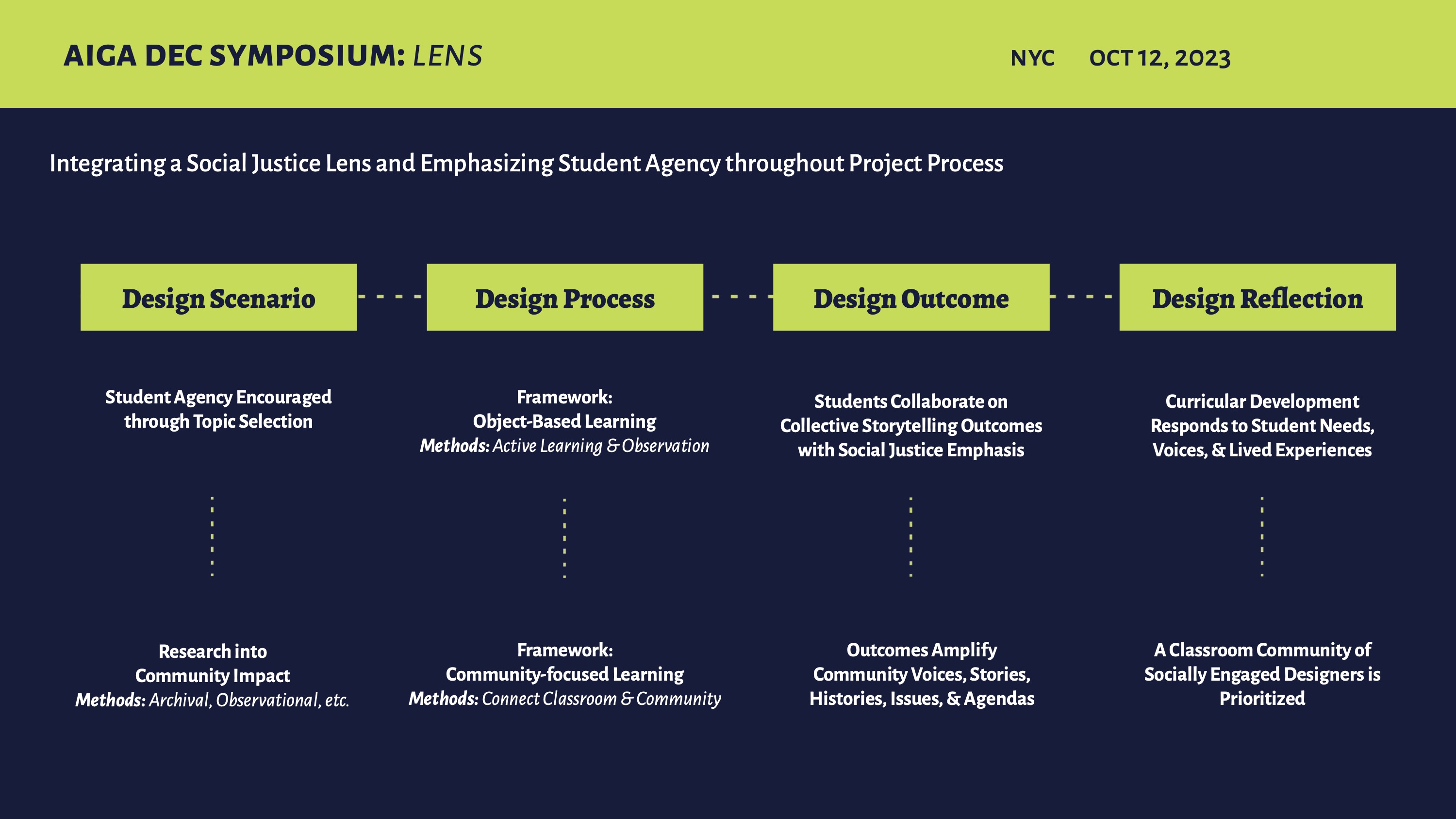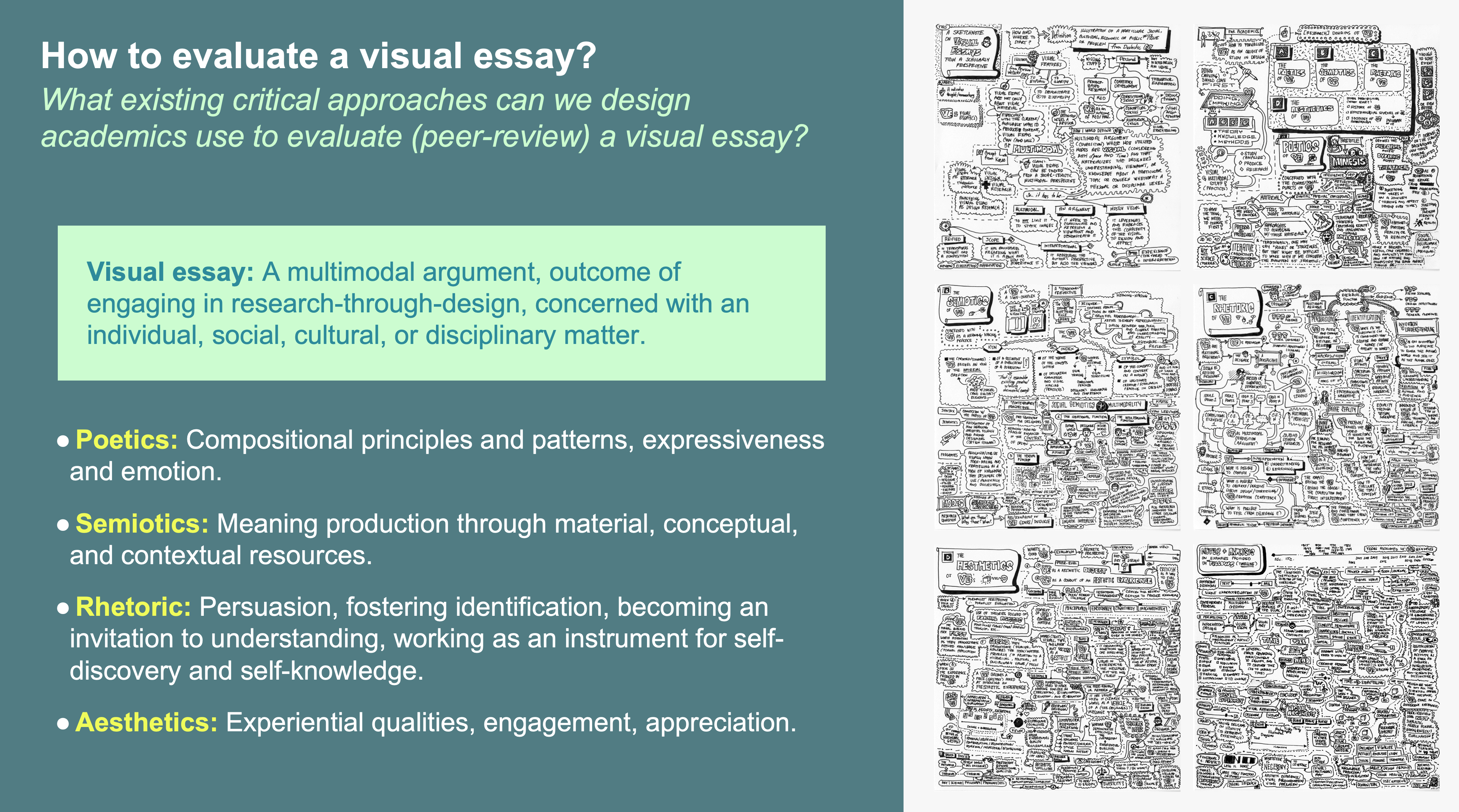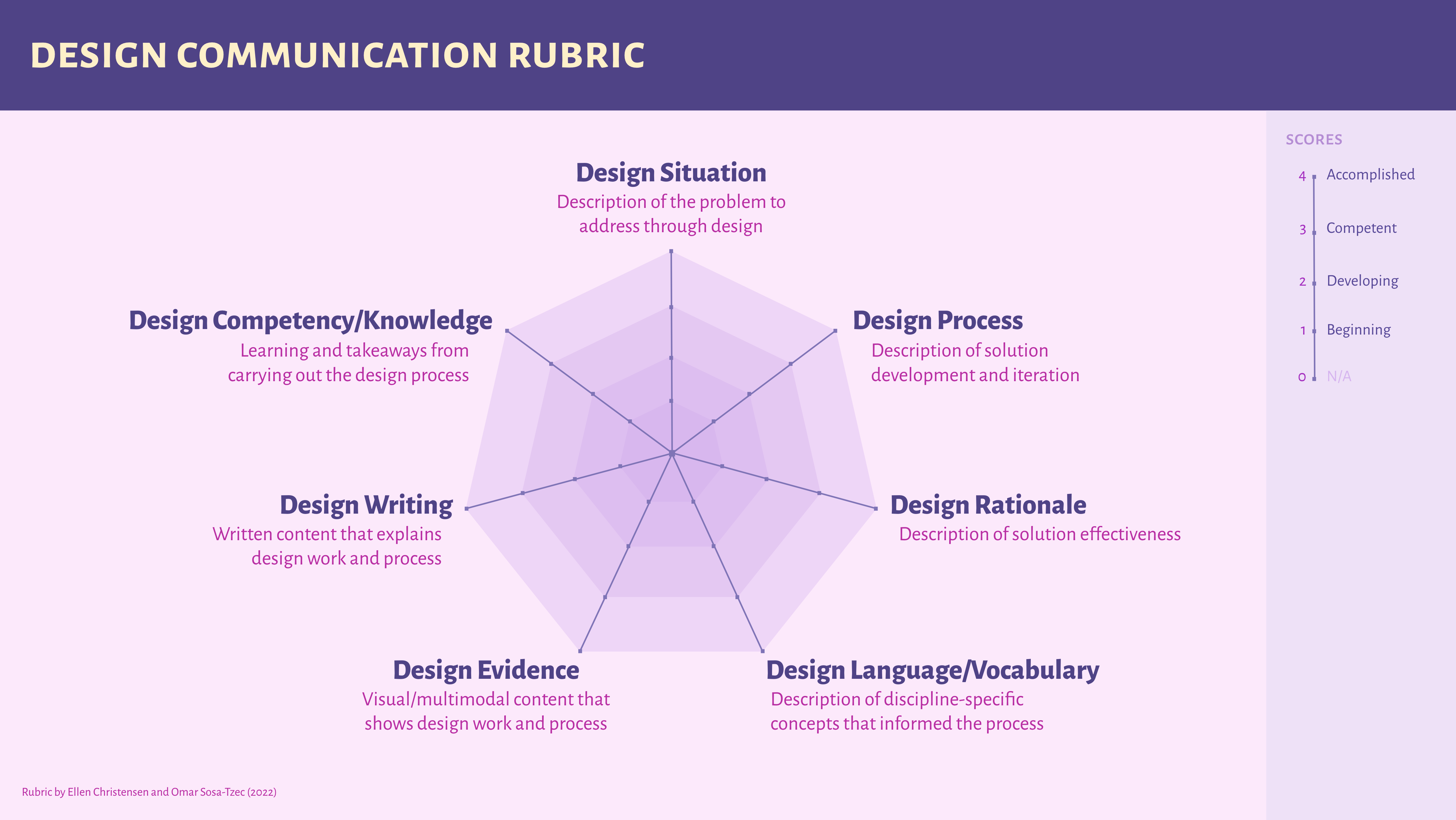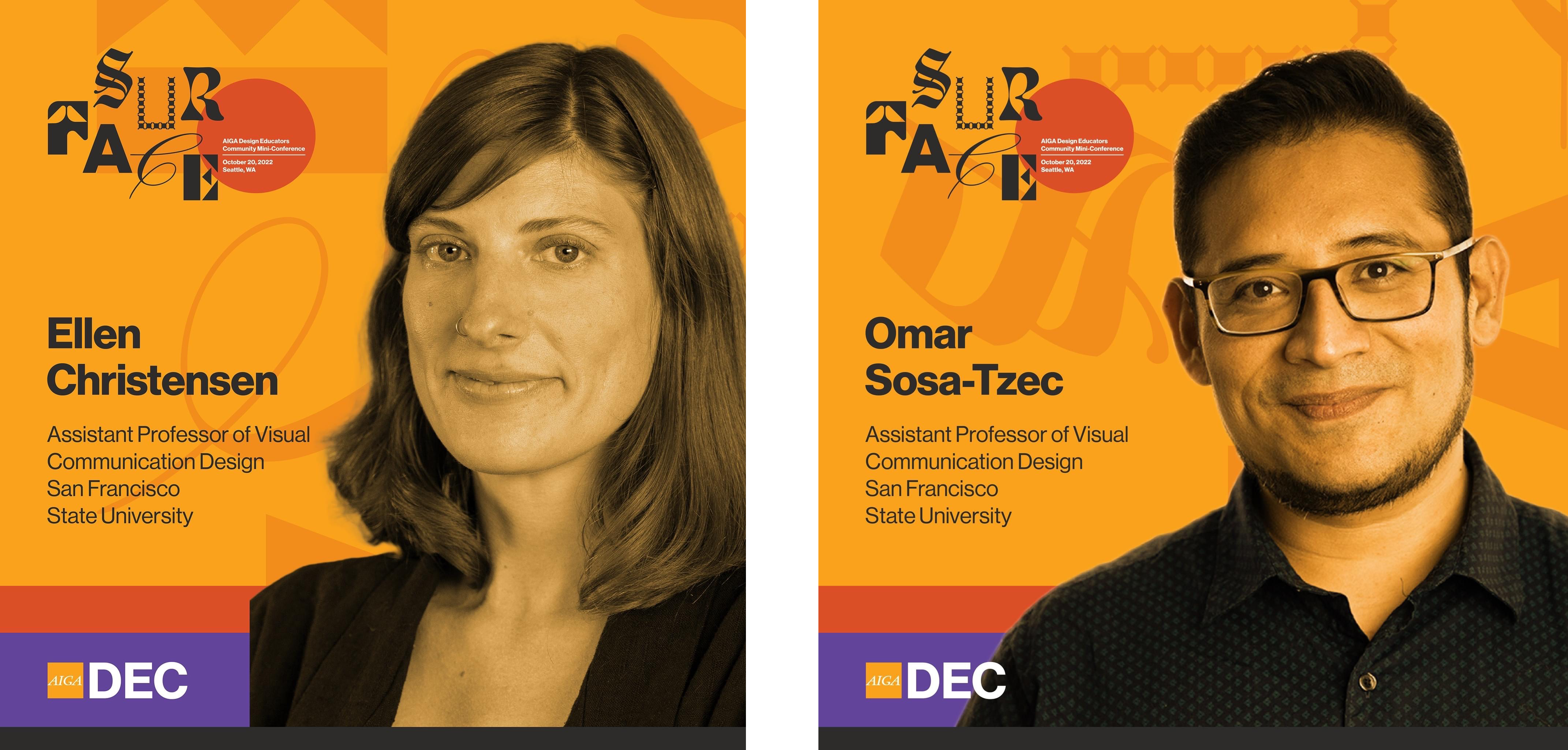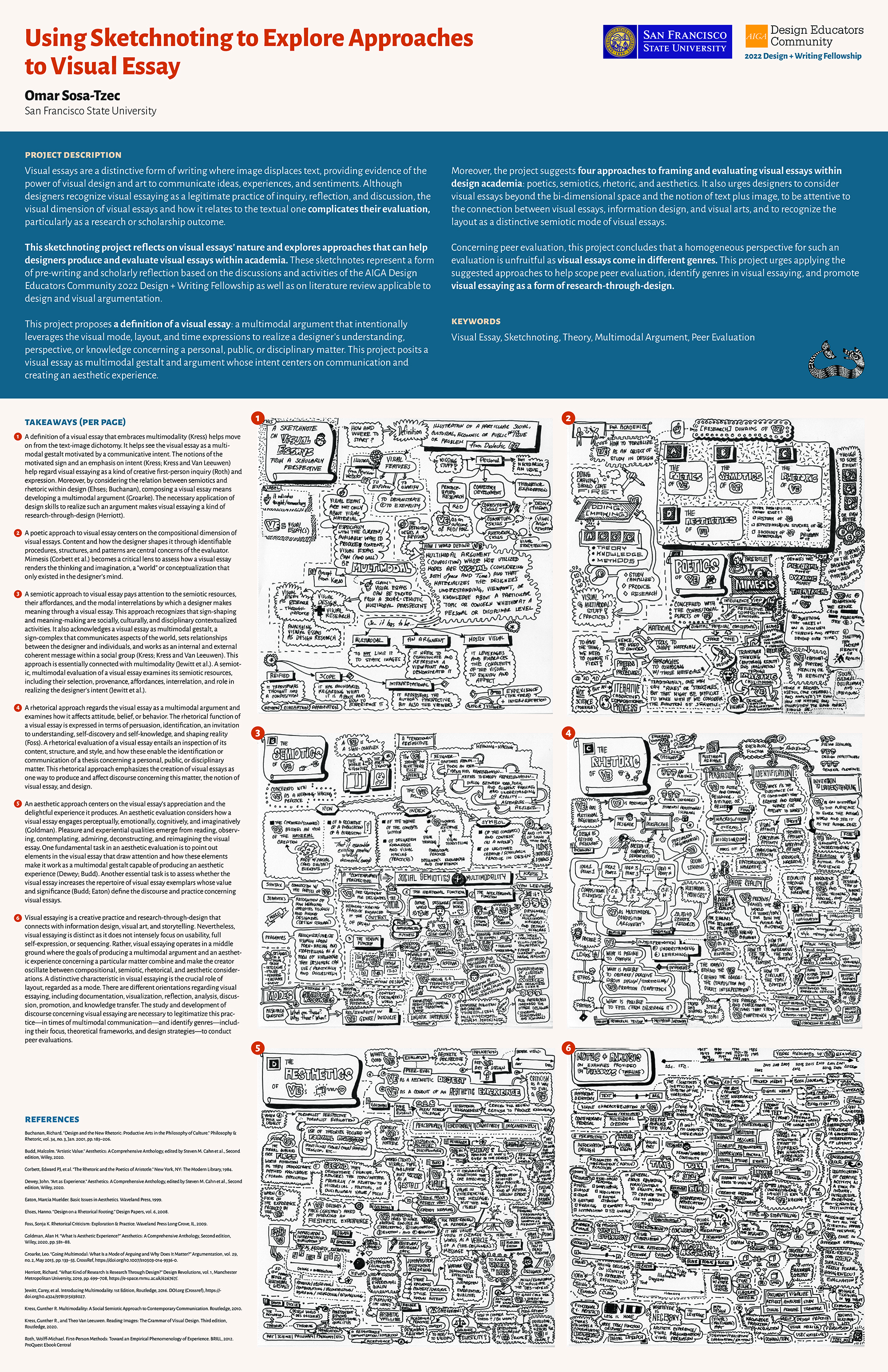Assistant Professors Christensen and Hussaini presented about integrating social justice into visual communication design curriculum at the 2023 AIGA DEC Symposium
Assistant Professors Christensen and Hussaini presented together at the AIGA DEC Lens 2023 Symposium in New York City, as part of the AIGA National Design Conference. The AIGA DEC hosted Lens as a one-day symposium featuring peer-reviewed papers, panels, posters, and other work from educators, graduate students, and industry professionals that address ideas and topics connected to the theme LENS. Christensen and Hussaini introduced their work integrating a social justice lens into curricular development for visual communication design courses, specifically in relation to multimodal storytelling for two courses: the experimental Visual Storytelling elective class Christensen has introduced, and Research and Writing in Design, the core major requirement course Hussaini has re-envisioned. The presentation shared best practices formulated from these two case studies for pedagogical approaches to create politically engaged, community-focused classroom learning communities.
